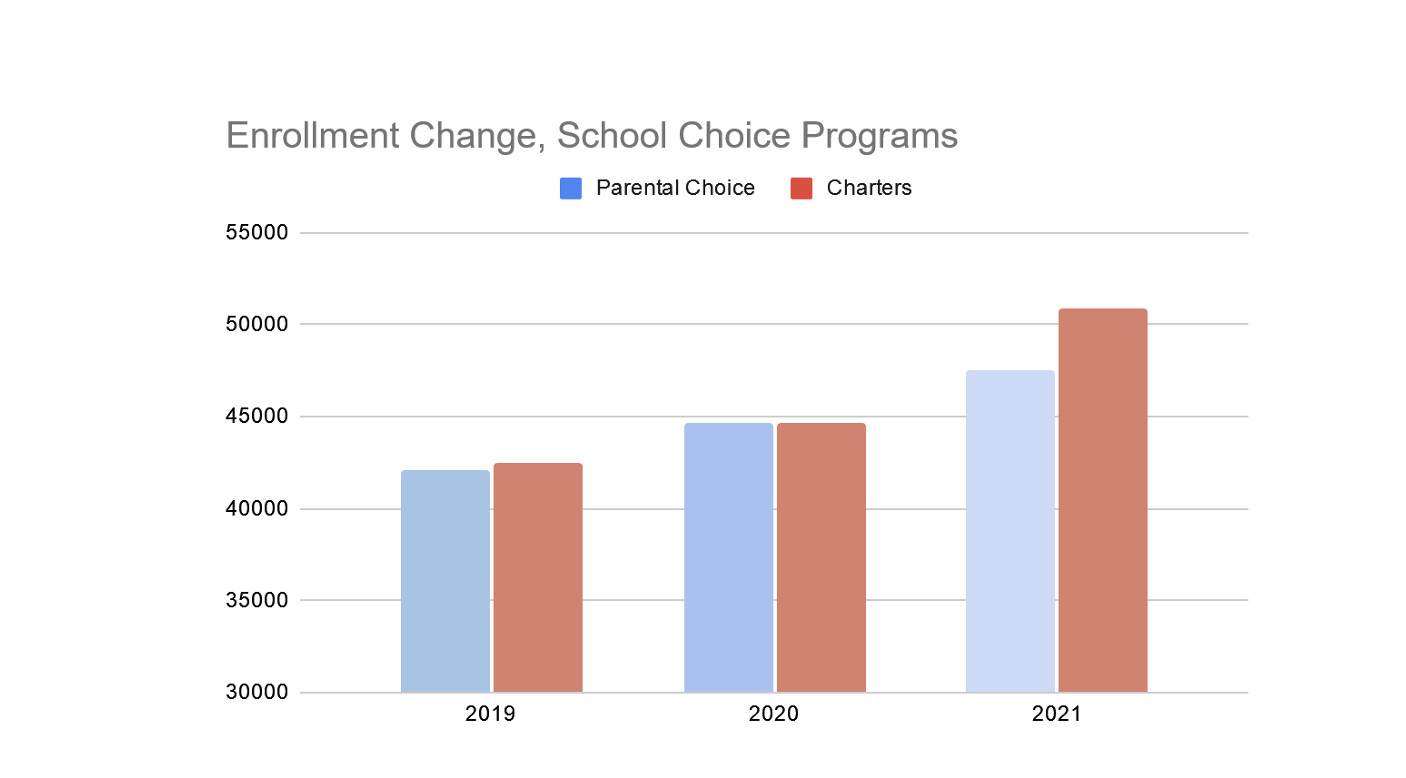Will Flanders, Research Director
Many have made the case that the pandemic increased the movement of families away from traditional public schools. Families are moving to nontraditional options, like learning pods, as well as to more established educational options, including public charter and private schools. Now, more and more data is available that helps to confirm this notion.
The latest example comes from a study by the National Alliance for Public Charter Schools (NAPCS). They examined public charter school enrollment state-by-state over the period that included the start of the COVID-19 pandemic. Of the 42 states across the nation that have public charter schools, 39 saw a significant increase in enrollment over that time period (the only states to see a decline in public charter enrollment were Illinois, Iowa and Wyoming). The rate of enrollment growth nationwide at 7% was the highest since the 2014-15 school year. This increase is different from that seen in 2014-15 because at that time, the increase was due to a quickly growing number of new schools, which was not the case during the pandemic.
Wisconsin was among the states that saw significant growth in student enrollment. According to the research, public charter school enrollment grew by 13.8% growth even as public school district enrollment declined by about 3.8% in the state. Wisconsin ranked 11th in the rate of public charter enrollment growth among the 42 states.
This was not simply a story of public charter schools remaining open while public schools closed their doors, but rather of public charter schools having a great ability to offer options tailored to student need. For example, the study highlight public charter schools that emphasized the mental health of students and the ability offer one-to-one technological support in virtual learning as key drivers of growth.
This is consistent with research conducted by WILL which showed that schools that offered in-person instruction, as well as those that had pre-pandemic experience with virtual learning, grew in Wisconsin during the pandemic. Traditional school districts that went fully virtual saw a 3% decline in enrollment, while those that remained in-person, as some public charter schools did, saw far smaller enrollment declines. Virtual public schools in Wisconsin are classified as public charter schools by the Department of Public Instruction. These schools saw enrollment growth of about 4%, which likely helped to spur the overall growth found by NAPCS.
Other sectors of Wisconsin’s educational options saw increases in enrollment as well. According to recently released data from the Department of Public Instruction, enrollment in the parental choice programs significantly increased as well. Pre-pandemic, there were about 35,000 students using a state-funded voucher to attend a private school of their choice around the state. For the 2021-2022 school year, enrollment jumped to over 47,000 students. These additional 12,000 families must meet specific requirements, such as income requirements, to qualify for the programs. The chart below depicts enrollment growth in both private school choice and charter programs over the past three years.

Whether these trends continue into the future remains an open question. Though we are now in a third school year effected to some extent by COVID-19, we are likely to—at some point—return to a relatively ‘normal’ educational landscape. However, the parental empowerment that occurred to a large extent as a result of the pandemic has opened up new fissures that suggest these changes may have more permanency. Since parents were given a peek into the classroom, issues such as the teaching of critical race theory, masking, and vaccinations have been hotly debated at school board meetings across the nation. Additionally, many families, who perhaps never considered an alternative education option for their child, may be more motivated to find the right environment for their child’s education moving forward. Without a doubt, the pandemic created a shift in mindset for thousands of families.
The reality is that only increased educational options can ensure that all families—regardless of their beliefs about any of these issues—can place their children in a learning environment that is right for them. Instead of serving as a roadblock, government ought to be encouraging policies that increase the ability for every parent to access a high-quality school of their choice. This includes removing barriers from the state’s private school choice programs so more students can participate, ensuring that school districts fully participate in open enrollment, and creating an environment where high-quality charter authorizers are more desirous of entering the Wisconsin market.
The data is clear that families are finding ways to take advantage of school choice. Traditional public schools must find ways to be more competitive in this marketplace, or get out of the way.